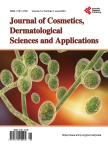Clinical Observation and Proposed Classification of Vitiliginous Patches by a Wood’s Lamp
Clinical Observation and Proposed Classification of Vitiliginous Patches by a Wood’s Lamp作者机构:Department of Dermatology Osaka University Graduate School of Medicine Suita Japan
出 版 物:《Journal of Cosmetics, Dermatological Sciences and Applications》 (化妆品、皮肤病及应用期刊(英文))
年 卷 期:2020年第10卷第4期
页 面:204-211页
学科分类:1002[医学-临床医学] 100214[医学-肿瘤学] 10[医学]
主 题:Vitiligo Wood’s Lamp Classification Repigmentation Clinical Course
摘 要:Although vitiligo lesion especially in static state is characterized as sharply demarcated and complete depigmented macule, we encounter patients who have various manners of hypopigmented lesions. We examined the 81 lesions using the newly released Wood’s lamp (Woody®) and investigated whether or not vitiliginous lesions could be uniformly classified under Wood’s lamp illumination and also this classification helped to estimate the tendency of repigmentation after treatment. As result, the vitiliginous lesions were categorized into 4 types on intra- and peri-lesions prior to treatment by using the Wood’s lamp. The inside and border of the lesions were classified as follows: clear white, faint, multi-dot, and perifollicular for the inside, and sharp, blunt, confetti, and trichrome for the border. Suggestive residual pigmentation was detected in 73.6% of patients at the first visit and repigmentation was observed in 67.9% of patients at least 3 months after treatment. Lesions with the “clear white inside pattern showed significantly lower repigmentation frequency in 38.5% of patients compared to others. The borders with 4 enlarged lesions were composed of 3 of confetti-type and one of sharp-type. This preliminary study demonstrated that detailed observation with a Wood’s lamp could be the basis to classify vitiliginous lesions and might be useful for predicting not only disease progression but also repigmentation prior to treatment.



